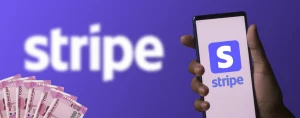Somewhere between a customer’s “Order Confirmed” and your bank’s “Credit Received”,your money goes sightseeing.It leaves an Etsy server in Dublin, stops at a payment processor in New York, gets converted in Singapore, and lands in India slightly jet-lagged.
Shopify does something similar — different terminals, same turbulence.
Because every marketplace payout is a trip: short for some, endless for others.
What decides the distance isn’t the platform — it’s the rails beneath it.And for Indian sellers, those rails come in three versions — marketplace routes, fintech rails, and the old SWIFT corridor.
Why Your Payout Travels the Way It Does
Marketplaces like Etsy and Shopify were built to make selling simple, not settling.
The checkout experience is modern; the payout architecture, not always.
When a buyer pays in dollars, those funds don’t just jump to your bank. They first pass through processors, compliance filters, and FX conversion desks — each adding a little time, a little cost, and a lot of mystery.
That’s why a $1,000 sale in New York becomes ₹82,500 or ₹83,000 in your account — depending on which rail it rode home on.
Route 1: Marketplace Payouts (Etsy / Shopify Default)
If you sell on Etsy or Shopify, this is your default lane.The platform collects the payment, converts it through its partner network, and remits INR directly to your account.
It feels frictionless — and that’s exactly the point.You see a “Payout Scheduled” date, not the FX margin that funds it.
| Platform | Flow | Cost Components | Settlement Speed | FIRC Handling |
|---|---|---|---|---|
| Etsy Payments | USD → Adyen / Payoneer → INR → Indian Bank | 2–3% FX + network fees | T+2–T+4 days | Partner issued (10–15 days) |
| Shopify Payments | USD → Stripe / Partner FX → INR | 2–3% + platform fee | T+2–T+3 days | Partner issued (10–15 days) |
The upside: You don’t touch a thing.
The trade-off:You don’t see a thing.
Marketplace routes prioritise predictability. They settle on schedule, stay compliant, and keep paperwork tidy.But for businesses measuring profit in basis points, that hidden 2–3% FX layer isn’t noise — it’s margin.
Route 2: Fintech Payouts (HiWiPay, Wise, etc.)
Fintech rails sit between marketplaces and banks — bridging automation with visibility.
Instead of letting the marketplace auto-convert, sellers withdraw earnings in USD to a global virtual account and convert later, on their own terms.
That shift — from automatic to autonomous — changes everything.
You see real-time FX, track reconciliation by order, and receive auto e-FIRCs instead of chasing PDFs across email threads.
| Fintech | Flow | FX Transparency | Timeline | Reconciliation |
|---|---|---|---|---|
| HiWiPay | USD → Virtual USD Account → INR | Full visibility, RBI-grade FX | <24 hrs | Auto invoice match |
| Wise | USD → Wise USD → INR | Mid-market rate | Same day | Manual upload |
| Payoneer | USD → Payoneer → INR | Approximate | 1–2 days | Manual |
Fintech rails don’t just move money faster — they give sellers control.For Shopify payment gateway alternatives or marketplace payment reconciliation, they’re the missing dashboard button.You stop asking “Where’s my payout?” and start knowing “Which order this payout belongs to.”
Route 3: SWIFT (The Old Trade Artery)
SWIFT still moves trillions every day.It’s precise, secure, and famously slow.
When funds move through SWIFT:
- They cross one or two intermediary banks ($15–$25 deduction each).
- The receiving bank applies a 2–2.5% FX spread.
- The transfer takes 3–5 business days to clear.
- The FIRC arrives weeks later — sometimes by post.
| Step | Cost / Delay | Comment |
|---|---|---|
| Intermediary Fees | $15–$25 | Hidden mid-transfer cost |
| FX Margin | 2–2.5% | Applied by receiving bank |
| Settlement | 3–5 days | Slowest fund transfer |
| FIRC | 2–3 weeks | Manual / paper-based flow |
SWIFT makes sense for high-value shipments or long-cycle exporters — less so for e-commerce merchants juggling weekly payouts.

Landed INR Comparison (USD 1,000 Example)
| Route | Approx. Cost | Time to Bank | INR Landed (on $10,000) | FIRC Process |
|---|---|---|---|---|
| Etsy / Shopify Marketplace | 3–4% | 2–4 days | ₹82,000–₹83,000 | 10–15 days (via partner) |
| Fintech (HiWiPay / Wise) | 0.5–1.5% | <24 hrs – 1 day | ₹84,500–₹85,500 | Instant / Auto e-FIRC |
| Direct SWIFT (Bank Route) | 3–3.5% | 3–5 business days | ₹83,000–₹83,500 | 2–3 weeks (manual request) |
(Assuming USD–INR = ₹86.00)
Even a 1% FX gap is ₹860 per $1,000.
Multiply that by 100 transactions, and your “shipping cost” quietly becomes financial drag.
Compliance & Reconciliation: The Merchant’s Blind Spot
Selling globally is easy.
Proving you received money legally, on time, and for the right invoice — that’s the real sport.
Marketplace payouts keep compliance safe but opaque.You get the FIRC, but not the data to match it.
Fintech payouts rebuild that bridge:
- Auto e-FIRC generated within 24 hours.
- Invoice-level reconciliation built into your dashboard.
- RBI-grade reporting that aligns with export declarations.
For merchants managing e-commerce payment reconciliation across multiple marketplaces, that isn’t convenience — it’s control.
Verdict
Etsy and Shopify changed how Indian creators reach the world.Fintechs changed how that world pays them back.SWIFT just kept everyone compliant in the background.
Marketplaces make selling effortless.Fintechs make earning visible.Banks make it official.
Every route works — but only one makes your payout feel like it belongs to you from click to credit.Because global commerce isn’t just about products crossing borders —it’s about payments keeping up.

In Summary — The HiWiPay Way
Marketplaces let you sell globally.HiWiPay helps you get paid like a global business.With transparent FX, 24-hour INR settlement, and auto e-FIRC, HiWiPay turns complex payout routes into a single, traceable flow.Because what matters isn’t how far your money travels.



